Cal Fire plans to rip out vegetation in San Diego County. But will that add fuel to a blaze?
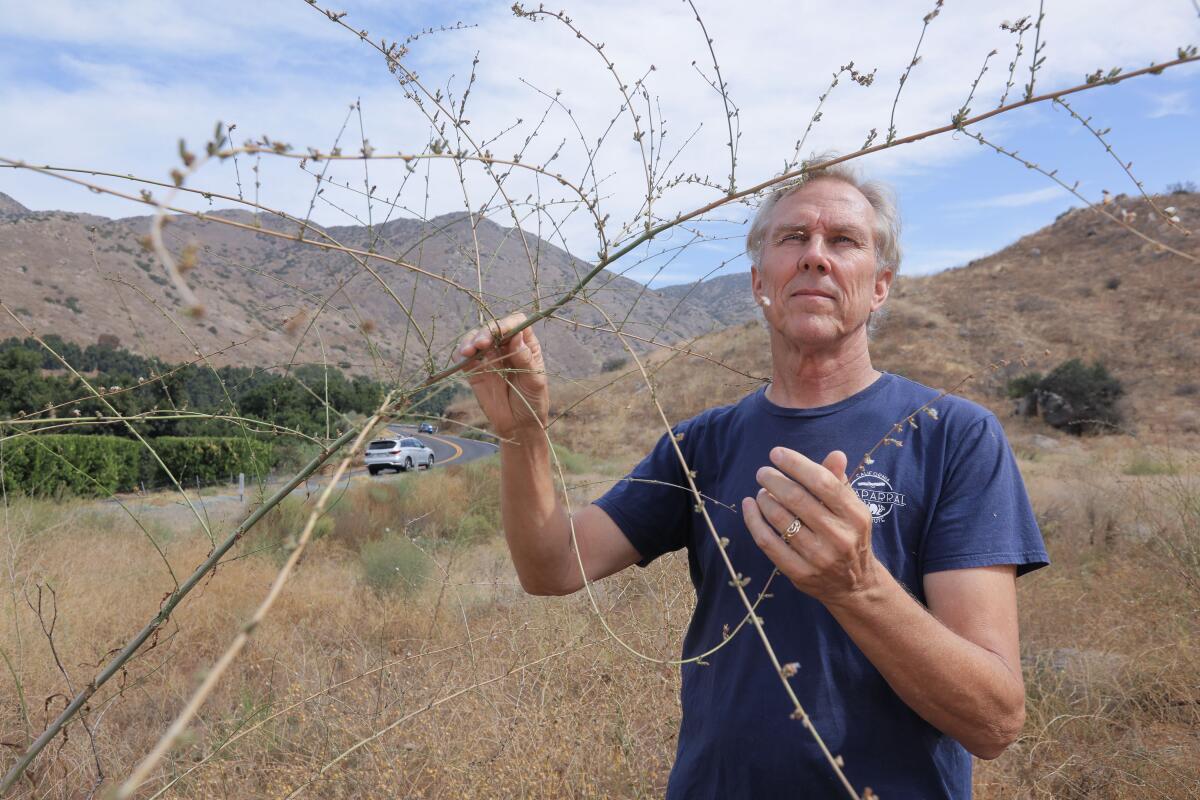
Highly flammable nonnative plants have increasingly played a major role in Southern Californiaâs struggles with wildfire â providing kindling along roadsides and around homes that turns sparks into menacing backcountry blazes.
San Diego County firefighting officials plan to dramatically ramp up efforts to rip out vegetation, both native and invasive, surrounding remote communities as part of a statewide campaign to prevent tragedies such as the Camp fire in Paradise, Calif.
However, environmental groups and scientists are now warning that brush removal projects may actually exacerbate the risk of fire by inadvertently helping to spread invasive grasses such as black mustard, star thistle and ripgut grass.
San Diego Countyâs ambitious goal is to clear 5,000 acres a year using prescribed burns and chainsaws, while also ramping up maintenance of trails and remote roads accessed by firetrucks.
Critics say the plan is ill-conceived and seeks to bypass environmental reviews that could force authorities to address the spread of invasive plants.
âThey just released a new strategy plan. Not a word in there about this situation,â said Rick Halsey, director of the San Diego-based California Chaparral Institute. âOnce again, they want to expedite environmental procedures so they can go out there and clear habitat.â
Officials with the California Department of Forestry and Fire Protection, known as Cal Fire, did not respond to repeated requests for comment.
County officials downplayed the notion that invasive grasses could be playing an outsize role in wildfire.
âFrom a fire standpoint, County Fire/Cal Fire San Diego Unit is concerned about any vegetation that can potentially contribute to the spread of wildfire,â county spokeswoman Tammy Glenn said in an email. âNon-native annual grasses have historically been a part of Californiaâs grasslands since their introduction during Euro-American settlement centuries ago.â
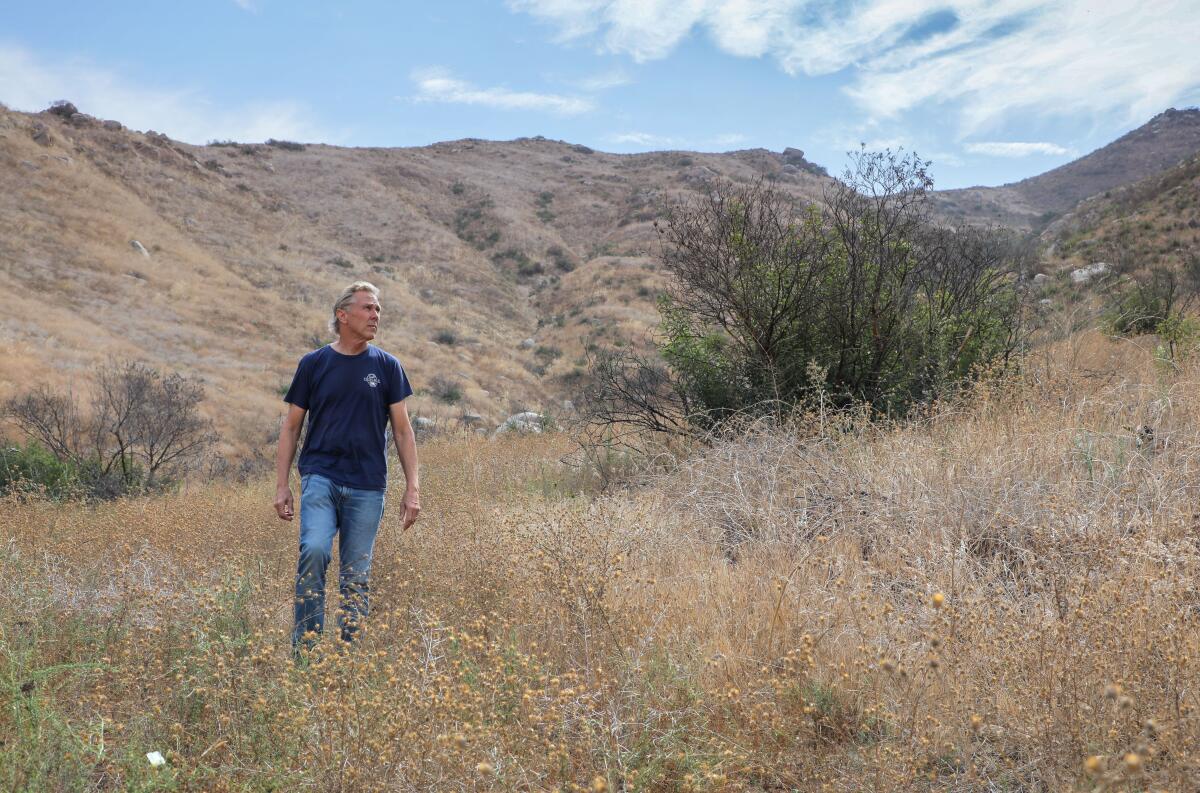
To illustrate his concerns, Halsey drove along Highway 78 on Wednesday to the rolling hills between Escondido and Ramona in San Diego County. There, large swaths of countryside were burned in the 2007 Witch fire, with some sections scorched again by smaller blazes in following years.
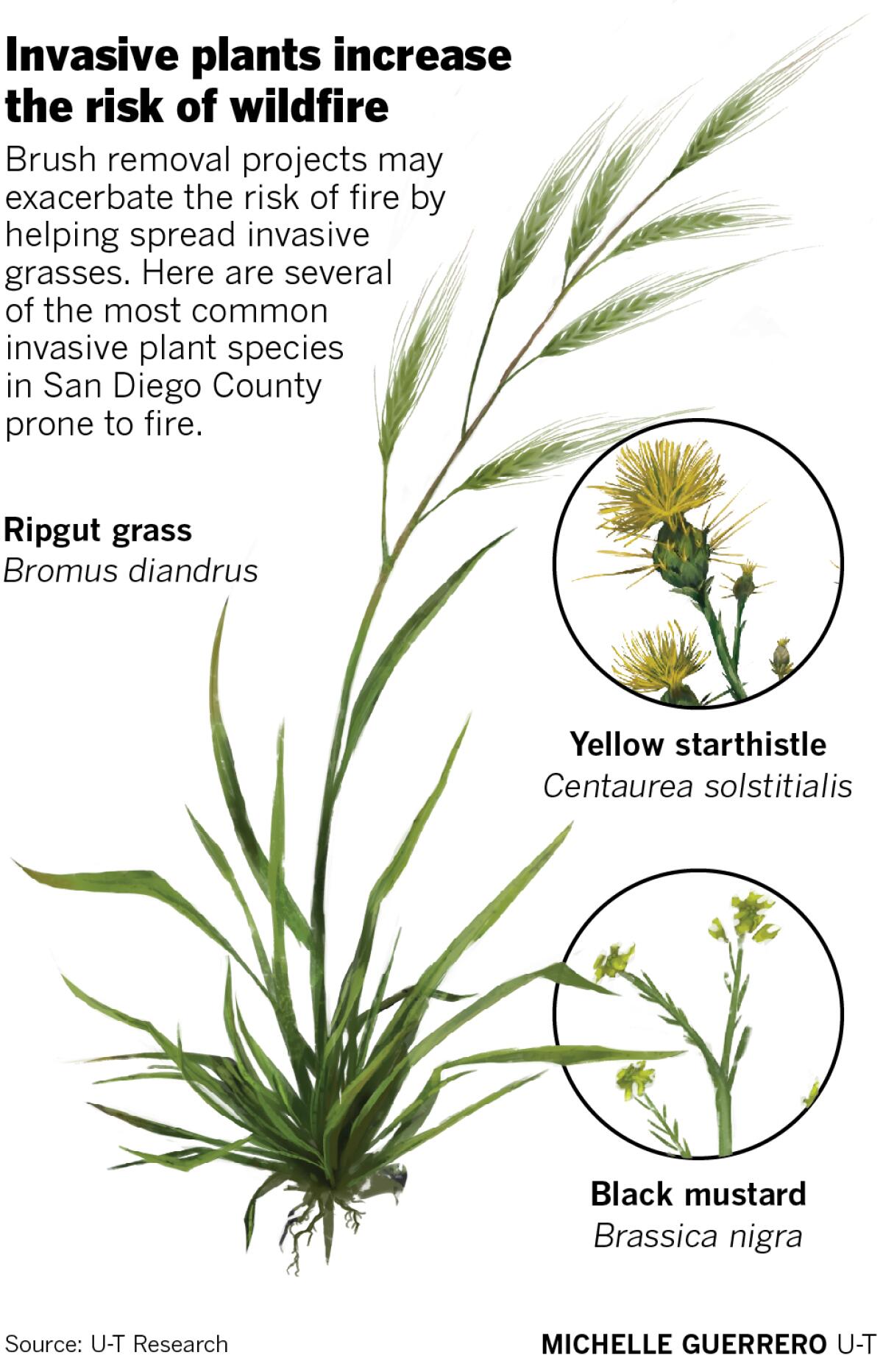
As a result of the fires, Halsey said, invasive plants have proliferated. Indeed, grasses turned golden brown in the late summer heat flowed over many of the slopes, interrupted only by sparse patches of green, native chaparral, such as chamise and laurel sumac.
âThis is just too much fire for this spot,â he said, âso youâve lost a lot of biodiversity. Plus you have a much more flammable situation. Thereâs going to be another fire here in 10 years.â
This same pattern will likely play out in many of the areas where Cal Fire wants to clear out brush and use prescribed burns, Halsey argued.
Chaparral and sage scrub include what are known as fire-adapted species, meaning wildfire is essential for the health of the plants. But the fire regimes of invasive grasses, Halsey said, are different than those of native plants, burning more frequently, faster and at lower temperatures.
As the head of the Chaparral Institute, his opposition is strongly informed by a mission to protect native chaparral and coastal sage scrub habitat, which provide habitat for everything from gnat-catchers to trapdoor spiders.
However, scientists have also come to similar conclusions about the spread of invasive grasses and the role theyâre playing in spreading wildfire.
âItâs the never-ending cycle where the more [invasive plants] burn, the more you have, the less you have of everything else, the more frequent and unpredictable your fires become,â said Travis Bean, UC Cooperative Extension weed science specialist based at UC Riverside. âIt quickly gets out of control.â
More than 90% of wildfires are caused by people, most often when they come into contact with the edges of forests and wildlands.
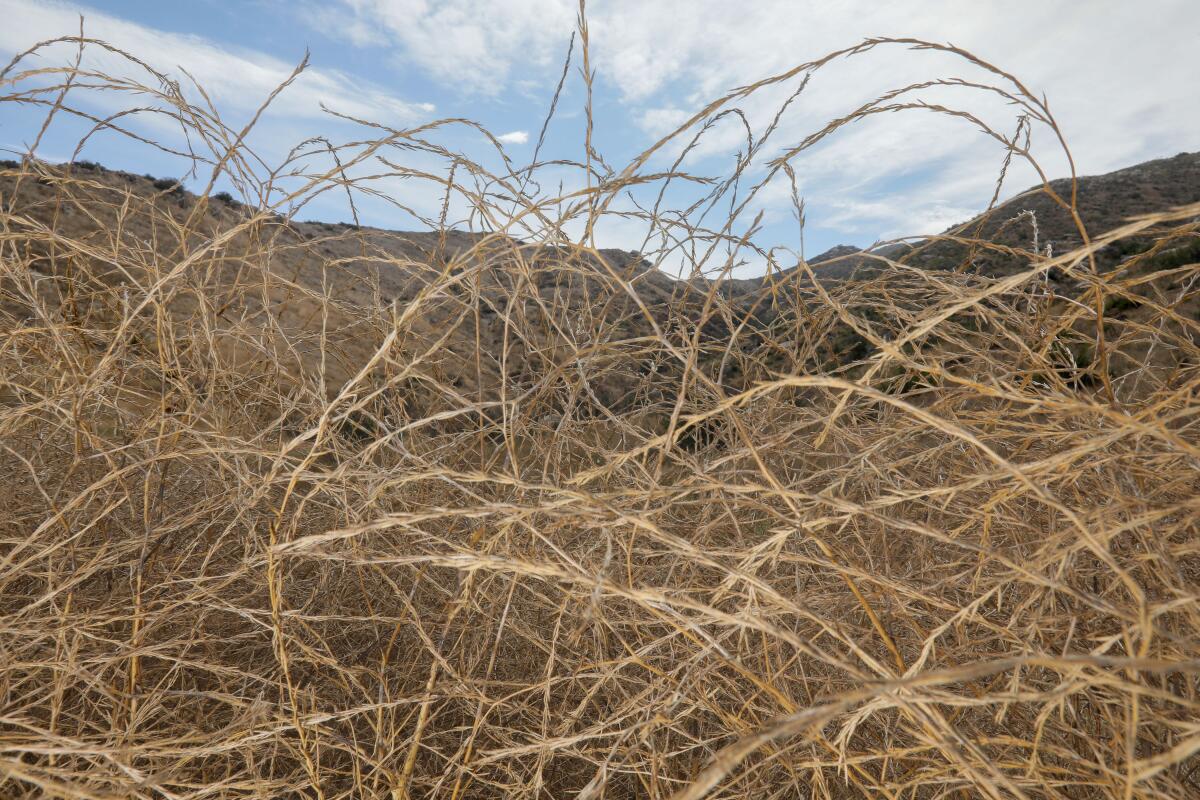
Bean said that this recipe for disaster most frequently plays out along roadsides lined with invasive grasses, where sparks, cigarette butts and other potential ignition sources from vehicles can easily bring catastrophic results.
âItâs like we drizzle all our roadsides with just a little bit of lighter fluid,â he said. âIf we donât manage them, the fireâs going to get off the roadside and into that chaparral, climb up that hill and get into that multimillion-dollar housing development.â
The catch for those engaged in brush management is that once you alter an ecosystem, whether by building a road or creating fuel breaks for firefighters, routine upkeep becomes essential in order to keep invasive plants from taking over, Bean said.
âOnce you perturb the system,â he said, âitâs going to be a constant annual, sometimes more than annual, maintenance scenario that now should be considered a part of your budget forever. Otherwise, in the luckiest-case scenario the native chaparral grows back. More likely, itâs going to get invaded by these easily ignited species.â
Even more likely is a situation where there is a mix of invasive grasses and the more hardy native bushes, Bean said. âThat can be even worse because you get that quick flash of ignition from the fine fuels and the heat retention and staying power of the chaparral species.â
âItâs like we drizzle all our roadsides with just a little bit of lighter fluid.â
— Travis Bean, UC Cooperative Extension weed science specialist based at UC Riverside
County officials said that they revisit treated areas every three to five years.
âThis ensures that the breaks continue to serve their intended purpose,â said county spokeswoman Glenn. âFuel breaks act as a buffer against the spread of wildfires, helping to protect nearby communities, including critical infrastructure and sensitive habitats.â
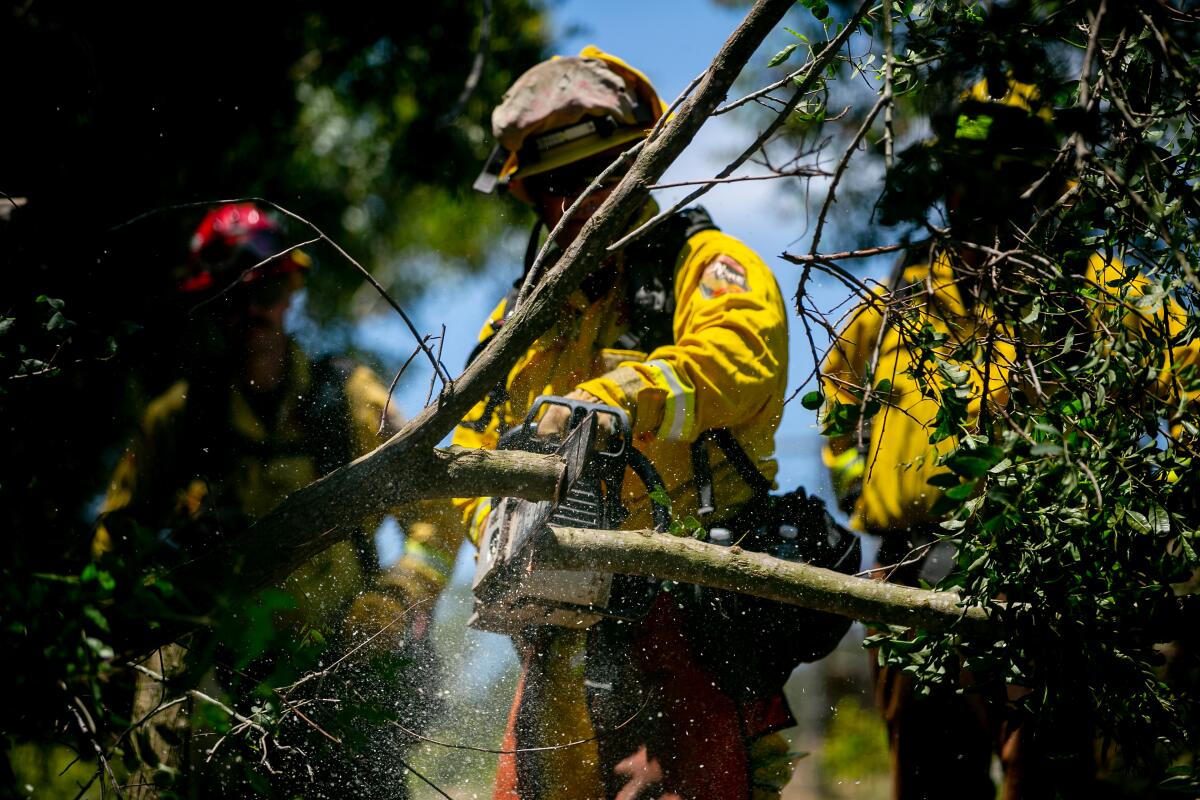
California kicked off its campaign to more aggressively prune back forests and scrublands this summer. Gov. Gavin Newsom waived the environmental review for 35 so-called fuel management projects across the state.
In San Diego County, Cal Fire cut down large swaths of vegetation around the communities of Crest and Guatay. Firefighters cut 200-foot-wide fuel breaks around homes on nearly 190 acres.
At the time, Cal Fire officials said they were selectively leaving some of the native plants in place.
Sabrina Drill, natural resources advisor for Los Angeles and Ventura counties for the University of California Cooperative Extension, said that grooming natural landscapes can, to a certain extent, help firefighters when battling blazes.
âI think there is a need to have established and maintained fire roads,â she said. âFuel breaks around developed areas can be somewhat effective.â
Specifically, she said, cutting back brush around homes can give firefighters staging from which to protect communities. However, she said, if those areas arenât regularly groomed, brush removal projects can lead to even more flammable conditions.
âI might suggest coming back in and spraying in future years when those annual grasses come in,â she said. âThere needs to be a commitment, and it needs to be at least annual.â
More to Read
Sign up for Essential California
The most important California stories and recommendations in your inbox every morning.
You may occasionally receive promotional content from the Los Angeles Times.











